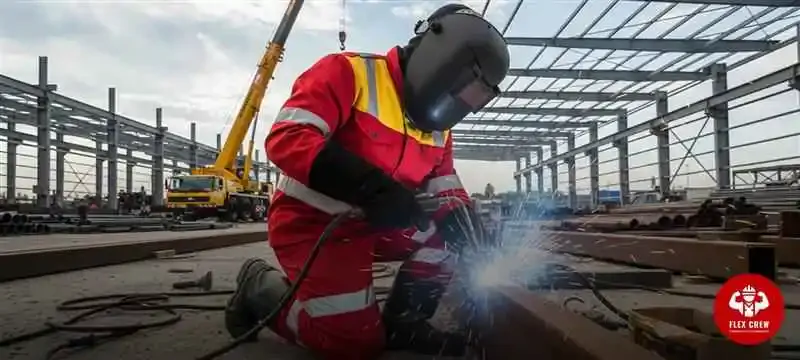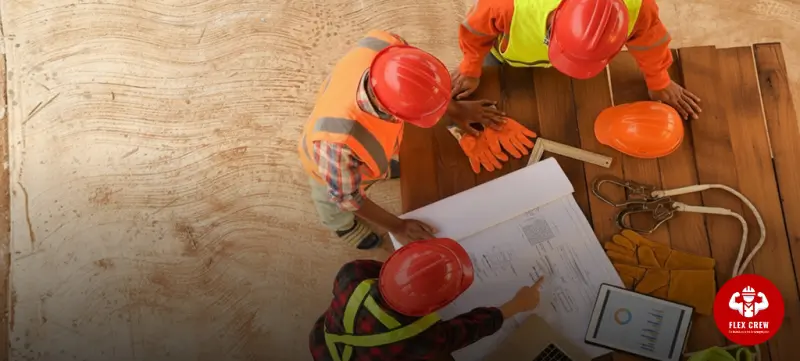You've got your materials priced out, labor costs calculated, and equipment rental locked in. But then your "perfectly planned" budget gets blown apart by expenses you didn't see coming. If you're asking "what are soft costs in construction," you're about to discover the sneaky budget busters that can make or break your project.
Bottom Line: When people ask "what are soft costs in construction," they're usually discovering that these aren't optional extras – they're essential expenses that can eat up 25-75% of your project budget. Smart contractors plan for these hidden costs upfront instead of getting blindsided when bills start rolling in.
Let's get real about something that trips up way too many contractors: you think you've nailed your estimate, but then reality hits. Permit fees, design changes, insurance premiums, legal consultations – suddenly your "tight" budget has more holes than Swiss cheese.
Here's what's happening: while you're focused on the obvious stuff (lumber, concrete, labor), soft costs are quietly building up in the background. And when they finally surface? That's when projects go from profitable to painful.
What Are Soft Costs in Construction? The Complete Answer
Before we dive deep into management strategies, let's answer the fundamental question: what are soft costs in construction?
Simply put, soft costs are all the indirect expenses required for a construction project that don't involve physical building materials or direct labor. While hard costs are the tangible stuff you can touch (lumber, concrete, steel, worker wages), soft costs are the intangible services and fees that make the project legally and logistically possible.

Hard costs are the no-brainers:
Materials (lumber, steel, concrete, pipes, wires)
Labor (your crew's wages and benefits)
Equipment rental (excavators, cranes, tools)
Site work (foundation, utilities, grading)
These usually make up about 70% of your total project budget. They're easy to estimate because you can count them, weigh them, and price them out pretty accurately.
Soft costs? They're everything else.
These are the indirect expenses that don't physically become part of the building but are absolutely necessary to get the job done. Think permits, design fees, legal costs, insurance, project management – all the stuff that happens before, during, and after the actual hammering starts.
Here's the kicker: soft costs can range anywhere from 25% to 75% of your hard costs. On complex projects, they can easily exceed six figures. Yet most contractors either ignore them completely or grossly underestimate them.
The Complete Breakdown: What Counts as Soft Costs?
Soft costs come in many flavors, and missing even one category can torpedo your budget. Let's break down the main culprits:
Design and Professional Services
This is usually your biggest soft cost category. We're talking about:
Architectural fees for building design and blueprints
Engineering services for structural, electrical, and mechanical systems
Interior design if the project requires it
Surveying costs to establish property lines and elevations
Geotechnical studies to assess soil conditions
These fees typically run 8-15% of your total project cost, but complex projects can push that higher.
Legal and Administrative Costs
The paperwork side of construction isn't cheap:
Building permits and plan review fees
Legal consultations for contracts and compliance issues
Environmental assessments and impact studies
Zoning variances or special use permits
HOA approvals for residential projects
Pro tip: Start the permit process early. Delays here can cost you way more than the permit fees themselves.
Financial and Insurance Costs
Money costs money, and protection costs even more:
Construction loan interest and origination fees
Builders risk insurance to protect the project during construction
General liability insurance for your crew and operations
Workers compensation premiums
Performance bonds for commercial projects
Accounting and bookkeeping services
Project Management and Administration
Someone's got to keep the chaos organized:
Project manager salaries (if dedicated to the project)
Site supervision and safety personnel
Temporary facilities like site offices and storage
Communication systems and project management software
Documentation and reporting costs
Marketing and Sales (For Developers)
If you're building to sell or lease:
Marketing materials and advertising campaigns
Sales office setup and model homes
Real estate commissions and closing costs
Signage and branding materials
Utilities and Site Setup
Getting the jobsite ready for work:
Temporary power and water connections
Site security systems and fencing
Portable restrooms and crew facilities
Staging areas and material storage setup
Post-Construction Costs
The expenses don't stop when construction ends:
Final inspections and certificate of occupancy
Warranty work and defect corrections
Landscaping and final site cleanup
Move-in coordination and tenant improvements
Why Soft Costs Matter More Than You Think
Here's where contractors get into serious trouble: treating soft costs as afterthoughts instead of essential budget components.
They add up fast. A $500,000 construction project might have $150,000 in soft costs. That's not pocket change – that's the difference between profit and loss.
They're unpredictable. Hard costs are pretty stable once you lock in material prices and labor rates. Soft costs? They can change based on permit delays, design revisions, or regulatory changes you didn't see coming.
They happen at the worst times. Many soft costs hit early in the project when your cash flow is already tight. Permit fees, design costs, and insurance premiums all come due before you start generating revenue from the work.
They're often non-recoverable. If your project gets cancelled or delayed, you're still on the hook for most soft costs. That $50,000 in design fees doesn't vanish just because the client changed their mind.
The Real-World Impact: How Soft Costs Derail Projects
Let's walk through a typical scenario that plays out way too often:
You bid a $750,000 commercial renovation with a healthy 15% profit margin built in. Your hard costs are solid at $600,000, and you allocated $37,500 for "miscellaneous expenses" (that's your soft cost budget, though you didn't really think of it that way).
Then reality kicks in:
Architectural revisions: $25,000
Extended permit review: $8,000 in additional fees
Environmental compliance: $15,000
Additional insurance requirements: $12,000
Legal review of tenant agreements: $6,000
Project management software and admin: $8,000
Marketing materials for leasing: $5,000
Your "miscellaneous" $37,500 just became $79,000. That 15% profit margin? It's now break-even if you're lucky.
This isn't a horror story – it's Tuesday for contractors who don't properly plan for soft costs.

How Construction Staffing Fits Into Soft Costs
If you're using construction staffing agencies (hello, FlexCrew USA customers!), some staffing-related expenses fall into the soft cost category:
Direct staffing costs are typically hard costs – the actual wages you pay workers are part of your direct labor expenses.
But staffing-related soft costs include:
Recruitment and screening fees for specialized positions
Background checks and drug testing requirements
Training and certification costs for new workers
Administrative overhead for managing temporary workforce
Compliance documentation for worker classifications
Smart staffing agencies handle most of these soft costs for you, which is why their services often save money in the long run. Instead of managing recruitment, screening, and compliance yourself, you're paying for a service that eliminates multiple soft cost categories.
Strategies for Managing Soft Costs Like a Pro
The key to soft cost management isn't avoiding them – it's planning for them intelligently.
Start with Comprehensive Planning
Create a detailed soft cost checklist for each project type. Residential remodels have different soft costs than commercial new construction. Build templates you can customize for each job.
Research local requirements early. Permit fees, inspection schedules, and regulatory requirements vary dramatically by location. A project in downtown San Francisco has completely different soft costs than one in rural Texas.
Build relationships with professionals. Having reliable architects, engineers, and legal counsel on speed dial can prevent soft costs from spiraling out of control.
Budget Realistically (Not Optimistically)
Add contingencies specifically for soft costs. Many contractors add 10% contingency to their overall budget but don't break it down. Allocate specific percentages for soft cost overruns.
Use historical data. Track soft costs on every project and build a database of actual expenses by project type and location. Your past projects are the best predictor of future costs.
Plan for the worst-case scenario. Permit delays, design changes, and regulatory surprises happen. Budget for them upfront instead of hoping they won't.
Leverage Technology and Systems
Use project management software that tracks both hard and soft costs in real-time. You need visibility into spending patterns as they develop, not after the damage is done.
Automate routine soft costs. Set up automatic payments for insurance, recurring fees, and subscription services. This prevents surprise bills and helps with cash flow planning.
Digital document management reduces administrative costs and speeds up permit and approval processes.
Time Your Soft Costs Strategically
Front-load the expensive stuff. Get your major design work, permits, and legal reviews done early when you have more flexibility to manage costs.
Sequence approvals efficiently. Some permits depend on others being approved first. Map out the approval sequence to minimize delays and carrying costs.
Negotiate payment terms. Many soft cost providers (especially professional services) offer payment plans or milestone-based billing.
Common Soft Cost Mistakes That Kill Profits
Mistake #1: The "We'll Figure It Out Later" Approach Too many contractors focus solely on hard costs during bidding and treat soft costs as an afterthought. By the time "later" arrives, you're locked into a contract that doesn't cover your actual expenses.
Mistake #2: Using Outdated Estimates Permit fees, insurance rates, and professional service costs change regularly. Using last year's soft cost data for this year's projects is a recipe for budget overruns.
Mistake #3: Not Planning for Changes Construction projects evolve. Design changes, scope additions, and regulatory updates all trigger additional soft costs. Plan for change instead of fighting it.
Mistake #4: Ignoring Regional Differences Soft costs vary dramatically by location. What works in rural markets might be completely wrong for urban projects, and vice versa.
Mistake #5: Treating All Projects the Same A simple renovation has different soft costs than new construction. Commercial projects have different requirements than residential. Customize your soft cost planning accordingly.
Industry Trends Affecting Soft Costs in 2025
Several trends are reshaping soft costs in construction:
Increased regulatory compliance is driving up legal and administrative costs. Environmental regulations, safety requirements, and energy efficiency standards all add layers of soft costs.
Digital transformation is creating new soft cost categories (software subscriptions, digital tools) while reducing others (paper-based processes, manual administration).
Labor shortages are increasing recruitment and training costs, making workforce-related soft costs more significant.
Supply chain disruptions are forcing more detailed project management and risk assessment, increasing administrative soft costs.
Sustainability requirements are adding new categories of soft costs, from LEED certification to environmental impact studies.
Your Soft Cost Questions, Answered
Q. What percentage of my budget should I allocate for soft costs?
A. It depends on project complexity, but 25-35% of hard costs is a good starting point. Complex projects with extensive permitting can go higher.
Q. When do soft costs typically occur?
A. Unlike hard costs (which happen mainly during construction), soft costs occur throughout the project lifecycle – before, during, and after construction.
Q. Can I pass soft costs through to my client?
A. Many soft costs can be reimbursable expenses if structured properly in your contract. Always clarify this upfront.
Q. How do I estimate soft costs for a project type I've never done?
A. Research similar projects, consult with professionals in that market, and add generous contingencies. Consider partnering with someone who has experience.
Q. Are there tax advantages to certain soft costs?
A. Many soft costs are deductible business expenses, but some (like LEED certification) may qualify for tax credits. Consult your accountant.
Q. How do soft costs differ between residential and commercial projects? A. Commercial projects typically have higher soft costs due to more complex permitting, legal requirements, and professional services needs.
Q. Can technology help manage soft costs?
A. Absolutely. Project management software, digital permitting systems, and automated reporting can significantly reduce administrative soft costs.
Q. What's the biggest soft cost mistake contractors make?
A. Underestimating or ignoring them entirely during the bidding phase. This leads to projects that look profitable on paper but lose money in reality.
Q. How do I track soft costs effectively?
A. Create specific budget categories for each type of soft cost and track them separately from hard costs. Use software that provides real-time reporting.
Q. Should I use a staffing agency to reduce soft costs?
A. Quality staffing agencies often reduce overall soft costs by handling recruitment, screening, compliance, and administrative tasks that would otherwise be internal soft costs.
Stop Letting Soft Costs Surprise You
Here's the reality: soft costs aren't going anywhere. If anything, they're becoming a bigger part of construction budgets as projects get more complex and regulations get stricter.
The contractors who thrive are the ones who plan for soft costs upfront, track them religiously, and build them into their pricing from day one. The ones who struggle are still hoping they can wing it with a generic "miscellaneous expenses" line item.
At FlexCrew USA, we understand that staffing is often both a hard cost (direct labor) and involves soft costs (recruitment, compliance, administration). Our platform is designed to minimize the soft cost side of workforce management by handling the administrative overhead, compliance documentation, and screening processes that would otherwise eat into your budget.
Smart construction companies don't fight soft costs – they manage them strategically. Because at the end of the day, the only thing worse than paying for soft costs is not planning for them.


